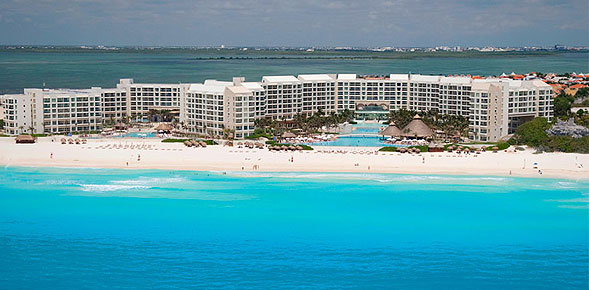
The Westin Lagunamar Ocean Resort Villas & Spa, Cancun
Compared with Q2 2015, the Canadian hotel industry’s occupancy was nearly flat (+0.4% to 67.1%). Average daily rate was up 2.5% to CAD146.90. Revenue per available room increased 2.9% to CAD98.62. Compared with Q2 2015, the Mexican hotel industry’s occupancy was mostly flat (-0.5% to 63.3%). However, average daily rate was up 15.8% to MXN2,079.87, and revenue per available room grew 15.2% to MXN1,317.20.
HENDERSONVILLE, TENNESSEE – The Canadian hotel industry reported positive results in the three key performance metrics for the second quarter of 2016, according to data from STR. Compared with Q2 2015, the Canadian hotel industry’s occupancy was nearly flat (+0.4% to 67.1%). Average daily rate was up 2.5% to CAD146.90. Revenue per available room increased 2.9% to CAD98.62.
Among the provinces, Prince Edward Island recorded the largest year-over-year increases across the three key performance metrics. Occupancy in the province rose 10.0% to 58.7%; ADR was up 6.6% to CAD137.61; and RevPAR grew 17.3% to CAD80.82.
The only other double-digit increase came in Nova Scotia, where RevPAR was up 14.7% to CAD91.63.
Alberta experienced the steepest declines in occupancy (-7.8% to 57.3%) and RevPAR (-11.1% to CAD82.79).
Saskatchewan reported the largest drop in ADR (-4.7% to CAD127.50) and the only other double-digit decline in RevPAR (-10.2% to CAD72.92).
Mexico hotel performance for Q2 2016
The Mexican hotel industry reported mostly positive results in the three key performance metrics for the second quarter of 2016, according to data from STR.
Compared with Q2 2015, the Mexican hotel industry’s occupancy was mostly flat (-0.5% to 63.3%). However, average daily rate was up 15.8% to MXN2,079.87, and revenue per available room grew 15.2% to MXN1,317.20.
“Performance was pretty similar to the first quarter with a weakened Peso as the main reason behind Mexico’s hotel success,” said Fatima Thompson, STR’s associate director of business development, hotels. “Based on proximity alone, Mexico gains a lot of travelers from the U.S. But a lot of people realize that now is a good time to take advantage of the value, and hoteliers have capitalized with increased rates. It will be interesting to monitor the impact of Brexit on the Peso and ultimately the hotel industry in Mexico.”
Among the key markets in the country, Northwest Mexico posted the largest spike in RevPAR (+52.3% to MXN1,432.36), driven primarily by the country’s largest increase in ADR (+49.2% to MXN2,355.25). Occupancy in the market was up 2.1% to 60.8%.
Mexico City experienced the largest rise in occupancy (+8.3% to 70.7%). That coupled with a 19.9% increase in ADR to MXN2,486.43 pushed RevPAR up 29.8% to MXN1,758.07.
The only decreases in any of the three key performance metrics were reported in the Yucatan Peninsula (occupancy -6.4% to 69.1%) and Northeast Mexico-Monterrey (occupancy -0.2% to 65.6%).
“The country as a whole is such a great deal, it appears as if people are exploring areas outside of the always popular destinations.”
Theodore is the Co-Founder and Managing Editor of TravelDailyNews Media Network; his responsibilities include business development and planning for TravelDailyNews long-term opportunities.































































































































































































